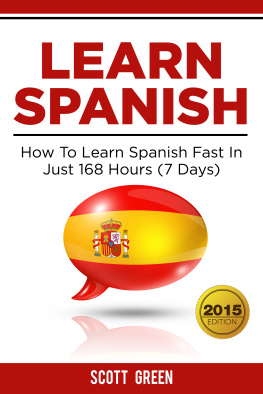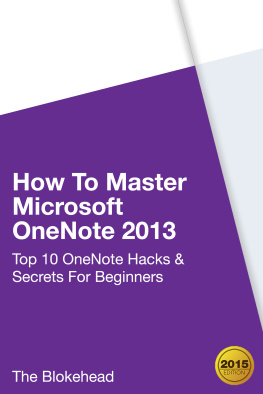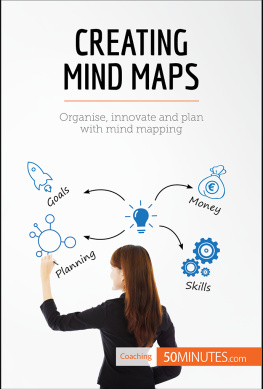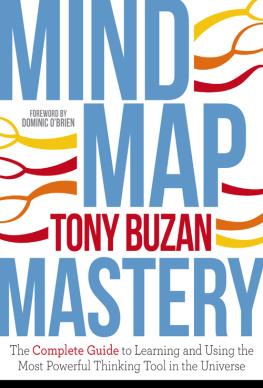Mind Mapping
Step-by-Step Beginners Guide in Creating Mind Maps!
Scott Green
Yap Kee Chong
8345 NW 66 ST #B7885
Miami, FL 33166
Digital Edition
Copyright 2014
All Rights reserved. No part of this book may be reproduced or used in any way or form or by any means whether electronic or mechanical, this means that you cannot record or photocopy any material ideas or tips that are provided in this book.
Get Future New Releases In This Series For 99 Cents
http://eepurl.com/5x58P
Like Us On Facebook
https://www.facebook.com/theblokehead
Check Out Our Other Books
Habit Stacking: How To Change Any Habit In 30 Days
Habit Stacking: How To Beat Procrastination In 30+ Easy Steps (The Power Habit Of A Go Getter)
Health
Ebola Outbreak Survival Guide 2015: 5 Key Things You Need To Know About The Ebola Pandemic & Top 3 Preppers Survival
TABLE OF CONTENTS
PUBLISHERS NOTES
Disclaimer
This publication is intended to provide helpful and informative material. It is not intended to diagnose, treat, cure, or prevent any health problem or condition, nor is intended to replace the advice of a physician. No action should be taken solely on the contents of this book. Always consult your physician or qualified health-care professional on any matters regarding your health and before adopting any suggestions in this book or drawing inferences from it.
The author and publisher specifically disclaim all responsibility for any liability, loss or risk, personal or otherwise, which is incurred as a consequence, directly or indirectly, from the use or application of any contents of this book.
Any and all product names referenced within this book are the trademarks of their respective owners. None of these owners have sponsored, authorized, endorsed, or approved this book.
Always read all information provided by the manufacturers product labels before using their products. The author and publisher are not responsible for claims made by manufacturers.
Digital Edition 2014
Manufactured in the United States of America
CHAPTER 1

What is a Mind Map?
A mind map is a web-like structure composed of words, picture or images, and lines created with the sole intention of visual organization of information. A single concept or the main topic is drawn at the center of this structure, usually written on a blank landscape page. From the main topic, other major concepts are drawn out. Supporting words and ideas are loosely connected to these major concepts while minor topics are branching out until the very last idea is reached.
Mind map is said to be a type of spider diagram in Mathematics, wherein existential points are added to an Euler or a Venn diagram. Similar to a real spider, the main body of the mathematical equation (like that of the body of a spider), could spread out into other points (representing the legs of the spider). Idea sun bursting is another similar concept of mind map. Like the sun with its numerous rays, an idea could branch out into several smaller concepts, making it look like the actual sun.
For instance, if your central or main topic is stress, the other major concepts that could branch out from here are the definition of stress, theories and theorists of stress and the types of stress. From there, other subtopics can branch out from these major concepts such as factors causing stress, effects of stress and management of stress. Still, greater details can branch out such as relaxation techniques to combat stress and how to live a stress-free life.
Mind mapping are getting more popular as the years go by. Compared to the traditional methods of brainstorming, studying and linear note taking, mind mapping is said to be 15%-20% more effective in enhancing memory and improving learning. Many people are also acknowledging that tasks become easier and complex problems are being solved faster when mind mapping is used. This phenomenon could be attributed on how the brain works. A short review of how the brain processes the data may reveal the mystery of mind maps success. Here it is.
One of the numerous functions of the brain is that it lets you accept a flood of information that you receive from different sources. The information is stored in the knowledge bank in your brain, ready for use when you retrieve them. However, not all information received from the outside was deemed as important. Hence, only those that are considered vital are those that are retained and remembered by the brain. As for the rest of the information, they are usually lost and forgotten.
However, it is not only the level of importance of a data that would make its mark to the brains memory bank. Other factors may include the following:
- The brains general health. It comes without saying that the healthier the brain is, the higher the retention of information. Therefore, make it a goal to care for your brain by giving it adequate rest, stimulation and exercises and enough nutrients and oxygen. Protect it from trauma and other injury by wearing appropriate headgears when necessary.
- The number of senses used (the more senses you use, the more the retention of memory). You would notice that nursery teachers use this principle to make learning faster to the small kids. Aside from letting the children see the alphabet, for instance, they let them hear it through songs, let them touch the letters through art work or craft, let them taste the letters by asking them to bring food that begins with the letter that they are studying. College students, on the other hand, are given lectures and then some are required to undergo on-the-job-training to reinforce the learning inside the classrooms.
- The association of information to vital events or happenings in your life (this is the reason why you sometimes can remember the smallest details like what you were wearing, who you were with, what actually transpired when a very traumatic or memorable event occurred).
- The volume of information (the bigger it is, the more difficult it is to be remembered unless it is organized in a more friendly way for the brain, like mind mapping, for instance).
- Even the involvement of emotions is a factor. How you feel about a particular event would determine if that would be stored in the memory bank for good or not. Good memories are known to remain in ones memory for a long time whereas those that are deemed as bad memories are sometimes erased or deleted by the subconscious.
Mind mapping, together with these factors, could help you in various ways than you can imagine. It could be the solution that you may be seeking to improve your memory retention, expand your horizons, solve problems easily, set your goals and so much more. You could actually use it in your everyday life, both personal and professional. It is great for individual and group work. In addition, your creativity is being enhanced in the process. You actually become smarter with mind mapping. In all angles, it is a win-win situation for you when you utilize mind mapping in your life.
CHAPTER 2

Mind Maps Advantages And Disadvantages
Mind mapping is truly increasing in popularity as more people find it more useful and effective than other methods. However, this is not to say that it is the only cure for any information related issues. Although it is true that the advantages are huge and numerous, however, just like with all things, mind mapping has its down sides, too.



















